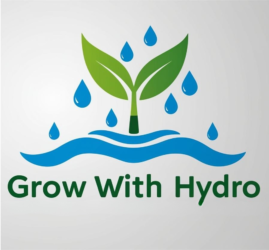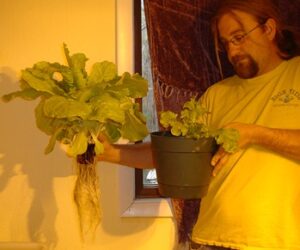Hydroponics, a word that might sound like it belongs in a high-tech laboratory, is actually a simple, innovative way to grow plants without soil. Yes, you read that right—no dirt required! If you’re a plant lover or just curious about alternative ways to grow your favorite greens, let’s dive into the fascinating science behind hydroponics.
What Is Hydroponics?
In its simplest form, hydroponics is a method of growing plants using water mixed with nutrients. Unlike traditional soil-based gardening, hydroponics relies on nutrient-rich solutions and alternative mediums like coconut coir, clay pellets, or even just air. The word itself comes from the Greek words “hydro” (water) and “ponos” (labor), meaning “water working.”
Hydroponics allows plants to grow faster, use less water, and take up less space. That’s why it’s popular for urban farming, greenhouses, and even in your living room. But how does it work, and why does it work so well? Let’s explore.
The Science Behind It
1. Plant Nutrition Basics
Plants need more than just water to survive. They rely on essential nutrients, typically absorbed from the soil, like nitrogen (N), phosphorus (P), and potassium (K), along with trace minerals like magnesium, calcium, and iron. In hydroponics, these nutrients are dissolved in water, creating a “nutrient solution” that directly feeds the plants. Because the solution is carefully controlled, plants get exactly what they need, leading to healthier growth.
2. Photosynthesis Still Rules
Just like in traditional gardening, hydroponic plants rely on photosynthesis—the process of converting sunlight, water, and carbon dioxide into energy. The big difference is the absence of soil. Without soil, the roots have more direct access to oxygen and nutrients, which can enhance their efficiency.
3. Root Zone Optimization
In soil, roots expend a lot of energy searching for nutrients. In hydroponics, those nutrients are delivered straight to the roots, saving the plant energy and promoting faster growth. The root zone is also oxygenated in most hydroponic systems, which is crucial because roots need oxygen to “breathe.” Better oxygen levels mean happier, healthier plants.
Different Types of Hydroponic Systems
There are several types of hydroponic systems, each catering to different needs and levels of expertise. Here’s a quick breakdown:
1. Deep Water Culture (DWC)
Imagine a plant floating on a raft in a nutrient-rich pond. That’s essentially deep water culture. The plant’s roots dangle directly into the nutrient solution, while an air pump adds oxygen to keep things fresh. This method is beginner-friendly and works well for leafy greens.
2. Nutrient Film Technique (NFT)
In NFT systems, plants grow in a sloped channel, with a thin film of nutrient solution flowing past the roots. The roots absorb nutrients as the solution flows by, and the excess water recirculates back to the reservoir. This system is efficient and ideal for lightweight plants like herbs and lettuce.
3. Drip Systems
This system uses a pump to drip nutrient solution onto the base of each plant. It’s versatile and works with a wide variety of plants, making it popular among hobbyists and professionals alike.
4. Aeroponics
In aeroponics, the roots are suspended in air and misted with a nutrient solution. This method uses the least amount of water but requires precise control and maintenance. It’s a bit advanced but offers incredible growth potential.
5. Wick System
A wick system uses a simple piece of fabric to draw nutrient solution up to the plant from a reservoir. It’s low-tech and easy to set up but works best for smaller plants.
Why Hydroponics Is So Effective
1. Faster Growth
In hydroponic systems, plants don’t have to work as hard to find nutrients and water. This efficiency translates to faster growth—sometimes up to 50% faster than soil-based gardening.
2. Water Efficiency
Traditional gardening loses a lot of water to evaporation, runoff, and overwatering. Hydroponics uses a closed-loop system, recycling water and reducing waste. It’s estimated that hydroponics uses up to 90% less water than soil gardening, which is a huge win for sustainability.
3. Space Saving
Since hydroponic systems don’t need soil, plants can grow closer together. Vertical farming, a popular application of hydroponics, allows multiple layers of plants to grow in the same footprint. Perfect for urban areas or small spaces!
4. Fewer Pests and Diseases
No soil means no soil-borne pests or diseases. While hydroponic systems aren’t completely pest-proof, they’re much easier to keep clean and controlled.
Lettuce, Side by side, same age, hydro vs. soil
Getting Started with Hydroponics
If you’re ready to give hydroponics a try, here are a few beginner-friendly tips:
1. Choose a System
Start simple! A Deep Water Culture or Wick System is perfect for beginners. You can even DIY your setup using household items like buckets or plastic containers.
2. Select the Right Plants
Leafy greens like lettuce, spinach, and herbs (basil, mint, cilantro) are great for beginners. Once you gain confidence, you can move on to fruiting plants like tomatoes or peppers.
3. Get the Nutrients Right
Buy a pre-mixed hydroponic nutrient solution to start. These are formulated to provide a balanced diet for your plants. As you gain experience, you can experiment with customizing your nutrient mix.
4. Monitor and Maintain
Invest in basic tools like a pH meter and an EC (electrical conductivity) meter. Keeping the nutrient solution at the right pH (usually 5.5-6.5) and concentration ensures healthy plant growth.
Challenges of Hydroponics
Like any gardening method, hydroponics comes with its challenges:
- Initial Cost: Setting up a hydroponic system can be pricier than buying a bag of soil and some seeds. However, the long-term savings and productivity often make up for it.
- Power Dependence: Most systems rely on pumps and lights, so a power outage can disrupt your setup.
- Learning Curve: While hydroponics isn’t rocket science, it does require a bit of research and attention to detail.
The Future of Hydroponics
Hydroponics isn’t just for hobbyists. It’s being used on a large scale to tackle global food challenges. With the world’s population growing and arable land decreasing, hydroponics offers a sustainable way to grow fresh, healthy food in places where traditional farming isn’t feasible—like deserts, cities, and even outer space!
Final Thoughts
Hydroponics is an exciting, science-backed way to grow plants efficiently and sustainably. Whether you’re a seasoned gardener looking for a new challenge or a complete newbie, this soil-free method offers endless possibilities. So why not dip your toes (or your plants’ roots) into the world of hydroponics? You might just find it’s your new favorite way to garden.


Interesting article. Question: How does hydroponics offer a more efficient and sustainable alternative to traditional soil-based gardening? Discuss key benefits like faster plant growth, reduced water usage, and space-saving capabilities. Additionally, explain how systems like Deep Water Culture (DWC), where roots are submerged in nutrient-rich water, or Nutrient Film Technique (NFT), which recirculates nutrient solution, enhance plant health and productivity.
Hi John,
I just finished reading your article, The Science Behind Hydroponics, and I have to say, it’s fascinating! Your deep dive into the science of hydroponics really caught my attention. While I found it incredibly informative, I admit some of the technical jargon was a bit challenging for me to grasp—especially when it comes to nutrient uptake and pH balancing. Would you mind simplifying that part for someone like me who’s still learning about the science behind it?
I’ve also written an article on hydroponics, titled Starting a Hydroponic Garden. My focus is more on helping beginners set up their first systems. I’d love to hear your thoughts on it, especially since you clearly have a strong grasp of the subject!
Looking forward to learning more from your insights—thanks for sharing your expertise.
Best regards, Mark